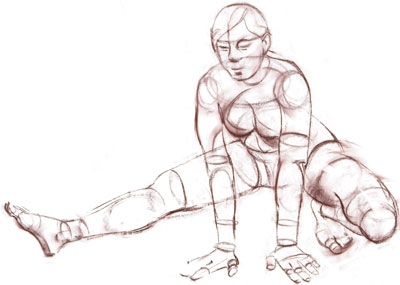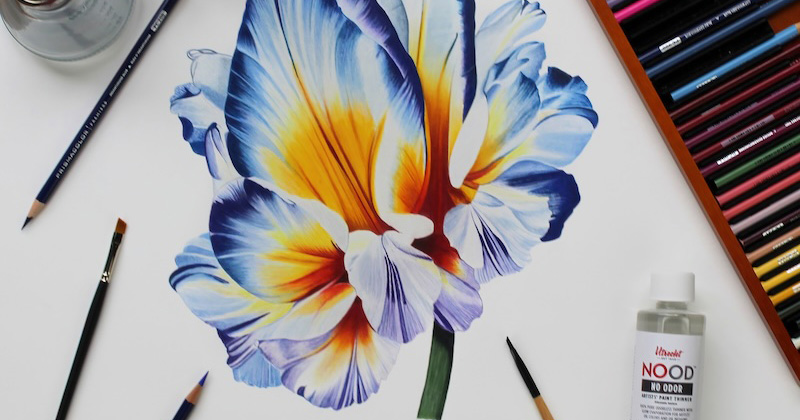Draw Dynamic Human Figures

The following article on drawing the human figure appeared in the May 2009 issue of The Artist’s Magazine, which is available for order as a digital download. Click here to learn more. Bonus: get a free download on how to draw people!
Drawing Dynamic Human Figures
By refining the basic structures into progressively smaller units, you can render the body accurately.
By Robert Barrett

The most effective way to simplify drawing the human figure is to reduce its complex forms to fundamental ones. In this article I’ll discuss how to use various aspects of geometric shapes, midlines and gestural drawing, as well as the principle of drawing through.

1. Start with the basic structures
The figure is primarily a three-dimensional object that has volume and occupies space. It’s important to think of the human figure in terms of fundamental forms, since it’s these forms that create the major masses that affect both the inside gesture and the outside shape of things. The smaller pieces are important but should be subordinated to the larger ones. When you break the fundamental units into increasingly smaller ones, those units also become essential forms from which you can develop and refine more specific forms.
By reducing the figure to geometric shapes, you can create convincing foreshortening. This approach also helps you understand the big forms and how one builds on top of another.
2. Build on a gesture framework
As with any drawing, construct the figure by roughing in the gestures. A loose gesture sketch will help you capture the overall essence of the figure. Continue to “flesh out” the figure by adding mass and weight via geometric forms (see drawing, opposite page, far right). It’s important to keep the figure fluid and gestural; otherwise, you may forget the action of the figure and make it too stiff or tight. Try to feel the action of the pose as you develop the solidity of the forms. Remember, the figure is dimensional—it has height, width and depth.

3. Move from the known to the unknown
Shapes like spheres, cubes, cylinders and cones can help you understand the complicated structures of the figure because you can draw them easily. When you understand a known quantity, such as a cube, you can more easily understand and estimate an unknown quantity, such as the pelvis.
To construct a modified form of the figure, sketch the legs, arms and torso basically as cylinders and reduce the head to a sphere, and suggest the hands and feet with wedge or cube forms. Draw (the forms) through—that is, draw as if the body were transparent.

4. Understand the design of the structures
The process of seeing complex structures as simple shapes is critical in understanding the design of both simple and complex anatomy. As you become involved in the process of breaking down complicated structures into simpler ones, you will find that your understanding of the design of the structures will increase dramatically.
5. Refine, define and modify
As the drawing progresses from the initial gesture sketch, refine the head into a sphere and the torso into basic cylinders. Modify the arms and legs from symmetrical cylinders into tapered cylinders. Add a straight line or shaft—a midline—down the center of an arm or leg to help define and refine the outer—and more subtle—contours of each respective appendage.

Painter, muralist and illustrator Robert Barrett is also a professor in the Department of Visual Arts at Brigham Young University in Provo, Utah. He’s a member of the Society of Illustrators, the Pastel Society of America, the Portrait Society of America and the Salmagundi Club.
This article is excerpted from his book, Life Drawing: How to Portray the Figure with Accuracy and Expression. © 2008 by Robert Barrett. Used with permission of North Light Books, an imprint of F+W Publications, Inc., 4700 East Galbraith Road, Cincinnati, Ohio, 45236; 800/289-0963. First Edition, $28.99.
This article appeared in the May 2009 issue of The Artist’s Magazine, which is available for order as a digital download. Click here to learn more.
Free artistsnetwork.tv preview
Click here to watch a free preview of the video workshop “Draw & Paint Dogs with Pastel Pencils” with Colin Bradley.
MORE RESOURCES FOR ARTISTS





Have a technical question?
Contact UsJoin the Conversation!